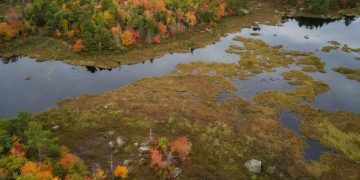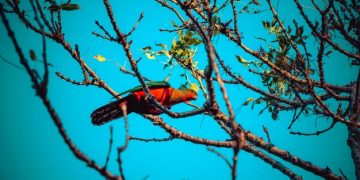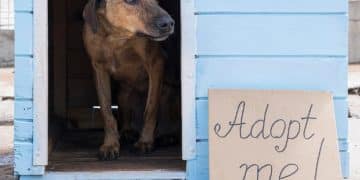Invasive Species Threat: Protecting US Native Bird Populations Now
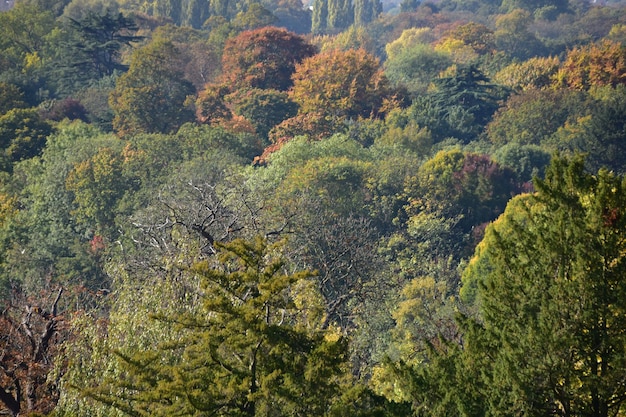
Invasive species pose a significant threat to native bird populations in the US, disrupting ecosystems and causing declines in bird numbers; urgent action is needed to control and eradicate these invaders to protect our avian biodiversity.
The escalating impact of invasive species on delicate ecosystems across the United States is raising alarm bells, with native bird populations facing unprecedented threats. An urgent alert: invasive species threatening native bird populations – what can be done now? is not just a question; it’s a call to action that demands immediate and comprehensive solutions.
The Alarming Spread of Invasive Species
Invasive species are non-native organisms that, when introduced to an environment, cause harm to the economy, environment, or human health. Their ability to outcompete native species and disrupt ecological processes makes them a major driver of biodiversity loss worldwide. The United States, with its diverse ecosystems, is particularly vulnerable to these invasions. Understanding the dynamics of their spread is crucial in crafting effective conservation strategies.
What Makes a Species Invasive?
Several characteristics define an invasive species. Rapid reproduction rates, broad diets, and high dispersal abilities allow these species to quickly colonize new areas. A lack of natural predators or diseases in their new environment further contributes to their unchecked spread.
Pathways of Introduction
Invasive species can be introduced through various pathways, both intentional and unintentional. Some were deliberately brought in for ornamental purposes, agriculture, or even as pets. Others arrive as stowaways on ships, planes, or vehicles, highlighting the role of global trade and travel in facilitating their spread.
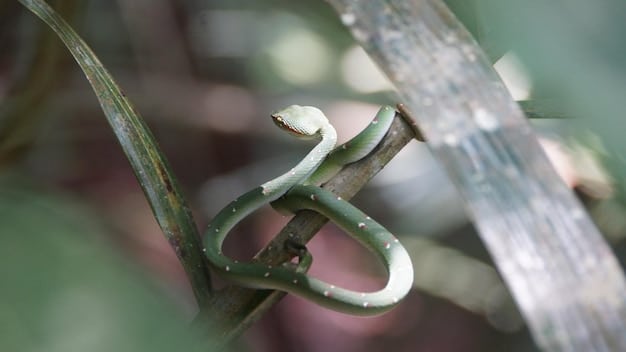
Here are some key pathways of introduction:
- Ballast water: Ships often carry ballast water, which can contain aquatic organisms from distant ports.
- The pet trade: Exotic animals, when released into the wild, can become invasive predators.
- Agriculture: Non-native plants introduced for agricultural purposes can escape cultivation and invade natural habitats.
- Tourism: Travelers can inadvertently carry seeds or insects on their clothing or luggage.
The economic and ecological costs associated with invasive species are staggering. Billions of dollars are spent annually on control and eradication efforts, while the damage to ecosystems and native species is often irreversible. The impact on native bird populations is particularly concerning, with many species already facing habitat loss, climate change, and other anthropogenic threats.
Birds in Peril: How Invasive Species Threaten Avian Populations
Invasive species impact bird populations through various mechanisms, including predation, competition, and habitat alteration. These effects can lead to population declines, range reductions, and even extinctions. Understanding these specific threats is essential for developing targeted conservation actions.
Predation: When Invaders Become Predators
One of the most direct impacts of invasive species is predation. Introduced predators can decimate naive bird populations that have not evolved defenses against them. Islands, with their often unique and vulnerable bird species, are particularly susceptible.
Competition: Fighting for Resources
Invasive species can also compete with native birds for resources such as food, nesting sites, and territory. This competition can reduce the availability of resources for native birds, impacting their survival and reproductive success.
Habitat Alteration: Changing the Landscape
Changing the landscape is another significant way that invasive species threatens bird populations. Introduced plants can transform habitats, making them unsuitable for native birds. These plants might alter vegetation structure, reduce food availability, or increase fire frequency.

Here are a few specific examples of invasive species impacting bird habitats:
- Feral cats: Feral cats are one of the invasive species in the world
- Brown tree snakes: Responsible for the extinction or decline of numerous bird species in Guam.
- European starlings: Aggressive competitors for nesting cavities, displacing native cavity-nesting birds.
- Invasive plants: Alter forest structure, reduce native plant diversity, and impact food availability for birds.
The vulnerability of bird populations to invasive species is exacerbated by other environmental stressors, such as habitat loss and climate change. Addressing these multiple threats requires a holistic approach to conservation, integrating invasive species management with habitat restoration and climate change mitigation strategies.
Specific Case Studies: Birds Under Siege
Examining specific case studies provides valuable insights into the complex interactions between invasive species and native bird populations. These examples illustrate the diverse ways in which invasive species can drive population declines and highlight the challenges of managing these threats.
The Brown Tree Snake in Guam
The introduction of the brown tree snake to Guam after World War II had devastating consequences for the island’s birdlife. With no natural predators, the snake population exploded, preying on native birds and driving many species to extinction. The Guam rail, a flightless bird endemic to the island, was extirpated from the wild due to snake predation.
European Starlings: A Cavity-Nesting Competitor
European starlings, introduced to North America in the late 19th century, have become widespread and abundant. These aggressive birds compete with native cavity-nesting species, such as eastern bluebirds and red-headed woodpeckers, for limited nesting sites. Starlings often evict native birds from their nests, reducing their reproductive success.
The Cane Toad in Australia
The cane toad was introduced to Australia in the 1930s to control cane beetles, but it quickly became an invasive pest. The toad’s toxic skin poses a threat to native predators, including birds of prey, that attempt to eat them. The impact of cane toads on Australian bird populations is still being studied, but initial findings suggest that they can have significant negative effects.
Conservation efforts to protect bird populations from invasive species often involve a combination of strategies:
- Eradication: Complete removal of the invasive species from an area.
- Control: Reducing the population size or spread of the invasive species.
- Prevention: Preventing the introduction of new invasive species.
These case studies underscore the urgent need for proactive management of invasive species to protect native bird populations. Early detection and rapid response are crucial to prevent new invasions from becoming widespread.
Taking Action: What Can Be Done Now?
Addressing the threat of invasive species to native bird populations requires a multifaceted approach involving government agencies, conservation organizations, and individual citizens. Implementing effective management strategies, raising public awareness, and promoting responsible practices are essential steps.
Policy and Legislation
Strong policies and legislation are crucial to prevent the introduction and spread of invasive species. This includes regulations on the import of exotic plants and animals, stricter enforcement of biosecurity measures at ports of entry, and funding for research and management programs. Collaborations with neighboring countries are also essential to address transboundary invasive species issues.
Public Awareness and Education
Raising public awareness about the impacts of invasive species is critical to preventing their spread. Educational campaigns can inform people about the risks of releasing exotic pets, planting invasive ornamentals, and transporting firewood. Citizen science initiatives can also engage the public in monitoring and reporting invasive species.
Individual Actions
Individuals can make a difference by adopting responsible practices. Avoid planting invasive plants in your garden, clean your hiking boots and gear after visiting natural areas, and never release exotic pets into the wild. Support local conservation organizations and participate in volunteer efforts to remove invasive species.
Here are some ways that you can help:
- Educate yourself: Learn more about invasive species in your area and the threats they pose.
- Report sightings: Report any sightings of invasive species to your local wildlife agency or conservation organization.
- Volunteer: Participate in volunteer efforts to remove invasive species from natural areas.
- Support conservation: Donate to organizations working to protect native bird populations from invasive species.
By working together, we can mitigate the impacts of invasive species and protect vulnerable bird populations for future generations. Urgent action is needed to address this growing threat and safeguard the biodiversity of our ecosystems.
Restoration and Prevention: Long-Term Strategies
While control and eradication efforts are essential, long-term strategies focus on habitat restoration and preventing future invasions. Restoring degraded habitats can increase the resilience of native bird populations to invasive species, while preventing new introductions is the most cost-effective approach.
Habitat Restoration
Restoring habitats that have been degraded by invasive species can improve the conditions for native birds. This may involve removing invasive plants, reforesting cleared areas, or restoring wetlands. Habitat restoration projects should prioritize native plant species that provide food and shelter for birds.
Biocontrol
Biocontrol involves using natural enemies, such as insects or pathogens, to control invasive species. Biocontrol agents must be carefully evaluated to ensure that they do not pose a threat to native species. Successful biocontrol programs can provide a sustainable and cost-effective way to manage invasive species.
Early Detection and Rapid Response
Early detection and rapid response (EDRR) programs are critical for preventing new invasions from becoming widespread. EDRR involves monitoring for new invasive species, quickly assessing the threat they pose, and implementing immediate control actions. EDRR programs require strong partnerships between government agencies, conservation organizations, and the public.
Key components of a successful EDRR strategy includes:
- Regular monitoring: Implement citizen programs that consistently search for invasive birds and their spread.
- Data collection: Document spread through geotagging, providing photos.
- Coordinated responses: Have a plan that is shared among local groups, the community, and your local Fish and Wildlife.
Investing in long-term strategies such as habitat restoration and EDRR is essential for protecting native bird populations from the ongoing threat of invasive species. These efforts require sustained funding, collaboration, and a commitment to conservation.
The Role of Citizen Science
Citizen science plays a vital role in monitoring and managing invasive species. By engaging volunteers in data collection and monitoring efforts, citizen science initiatives can provide valuable information about the distribution, abundance, and impacts of invasive species on native bird populations. These data can inform conservation management decisions and track the effectiveness of control efforts.
Monitoring Programs
Citizen scientists can participate in various monitoring programs, such as bird surveys, plant identification projects, and aquatic invasive species monitoring. These programs provide training and resources for volunteers to collect data using standardized protocols.
Data Analysis and Reporting
Citizen science data can be analyzed to track the spread of invasive species, assess their impacts on native bird populations, and evaluate the effectiveness of management interventions. Data can be reported to government agencies, conservation organizations, and researchers.
Education and Outreach
Citizen science initiatives also provide opportunities for education and outreach. By engaging volunteers in hands-on research, these programs can increase public awareness about invasive species and promote responsible environmental stewardship.
Benefits of citizen science include:
- Increased data collection: Volunteers can collect data over a larger area and longer time period than professional scientists alone.
- Cost-effectiveness: Citizen science can reduce the cost of monitoring and research.
- Public engagement: Citizen science can engage the public in conservation and promote environmental awareness.
By harnessing the power of citizen science, we can enhance our ability to monitor and manage invasive species and protect native bird populations.
| Key Point | Brief Description |
|---|---|
| ⚠️ Invasive Species | Non-native organisms causing harm to ecosystems. |
| 🐦 Impact on Birds | Predation, competition, and habitat alteration leading to population declines. |
| 🛡️ Conservation Actions | Eradication, control, prevention, and habitat restoration efforts. |
| 🤝 Citizen Science | Volunteers monitoring and collecting data to aid research and conservation. |
Frequently Asked Questions
▼
Invasive species are non-native organisms that cause harm to the environment, economy, or human health. They often lack natural predators, allowing them to spread rapidly and outcompete native species for resources.
▼
Invasive species can impact birds through predation by animals like feral cats, competition for nesting sites with species like starlings, and habitat alteration by invasive plants.
▼
Successful strategies include eradication programs like those used against the brown tree snake in Guam, habitat restoration efforts, and biocontrol using natural enemies of invasive species.
▼
You can avoid planting invasive plants in your garden, clean your gear after outdoor activities, report sightings of invasive species, and support conservation organizations working to combat invasive species.
▼
Citizen science involves volunteers participating in data collection and monitoring efforts. It increases data collection, reduces costs, and engages the public in conservation, aiding in the early detection of invasive species.
Conclusion
Protecting native bird populations from invasive species requires urgent and coordinated action. By implementing effective management strategies, raising public awareness, and promoting responsible practices, we can safeguard avian biodiversity and maintain healthy ecosystems for future generations.

